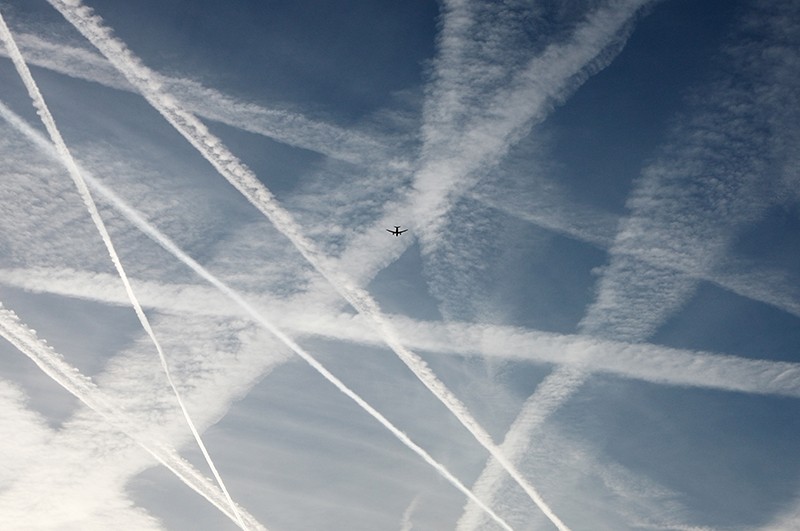カリフォルニア大学サンディエゴ校によるNature誌のコメント記事は、主要な汚染物質に対する「目覚め」の役割を果たします。 Nature comment piece from UC San Diego serves as a “wake-up” to the major polluter
2022-09-19 カリフォルニア大学サンディエゴ校(UCSD)
航空業界は、世界全体で年間約10億トンのCO2を排出しており、これは世界第3位の経済大国である日本に匹敵する。しかも、フライトによる排出量は毎年約2.5%ずつ増加している。
この研究では、フライトによる排出量削減に対処するためには、エンジン、機体、機内保管庫の大幅な見直しが必要になる可能性があり、これは大きなコストと財政的なリスクを伴う決断であると論じている。
地球温暖化に対処するための大胆な解決策を生み出すために、航空業界が取るべき3つのステップを提言している。
<関連情報>
- https://today.ucsd.edu/story/the-aviation-industry-needs-to-overhaul-its-response-to-climate-change
- https://www.nature.com/articles/d41586-022-02963-7
よりクリーンな空の未来へ-航空は抜本的な再設計を必要とする。効率とクリーン燃料だけでは十分ではありません。政府も産業界も、航空が気候に与える影響をゼロに近づけるために、他のアプローチも試行錯誤しなければならない。 A cleaner future for flight — aviation needs a radical redesign. Efficiency and clean fuels won’t be enough. Governments and industry must experiment with other approaches to bring the climate impact of aviation close to zero.
Steffen Kallbekken & David G. Victor
Nature Published:16 September 2022
DOI: https://doi.org/10.1038/d41586-022-02963-7

Contrails are created as jet engines burn fuel, and might have a greater effect on climate warming than does carbon dioxide.Credit: Richard Newstead/Getty
Aviation is a big polluter. Globally, the industry generates roughly one billion tonnes of carbon dioxide per year — comparable to that produced by Japan, the world’s third-largest economy. Although many governments are regulating emissions from cars and trucks, such as by phasing out internal-combustion engines and switching to electric vehicles, air transportation is technologically rooted in old patterns. Apart from a pause during the COVID-19 pandemic, emissions from flights have risen by 2.5% each year for the past two decades. Over the next 30 years, the industry’s impact on global warming is set to exceed that of its whole history1, since the Wright brothers’ first flights in the early 1900s.
Cutting the sector’s impact on global warming is high on the agenda of the triennial assembly of the International Civil Aviation Organization (ICAO) in Montreal, Canada, this month. Ministers from 193 nations will try to negotiate an industry-wide target for cutting emissions, in line with the goals of the Paris climate agreement. There will be much talk about the need for action. However, the preparations indicate that most of the focus will be on familiar ideas, such as cleaner forms of jet fuel and schemes to offset carbon emissions. It is no coincidence that these ideas are also the least disruptive to how the industry operates today.
In our view, this approach could prove dangerously narrow. Eliminating aviation’s impact on global warming means upending the industry. The longer that reality is evaded, the harder it will be to find effective solutions.
Emissions from aircraft cannot be slashed simply by bolting on new kit to capture pollution. It might prove impossible to produce clean enough forms of jet fuel at sufficient scale. The leading forms of carbon offsetting are so flawed as to be unworkable. And addressing the other climate impacts of aircraft beyond CO2, such as contrails, might require overhauling engines, airframes and on-board storage, in an industry that is extremely attentive to safety, weight and space. A typical airliner contains several million components. Commercial aviation is also tightly interwoven with air-traffic control and ground-handling processes, which make profound changes hard to plan and implement.
Experimentation is what is needed. Airlines, fuel providers and aircraft and engine manufacturers should test a wide range of ideas to learn what might really work. Some of this research is under way, but governments and companies need to push faster and harder. Getting started will also require understanding how uncertainties in climate science and technology affect emission control strategies.



